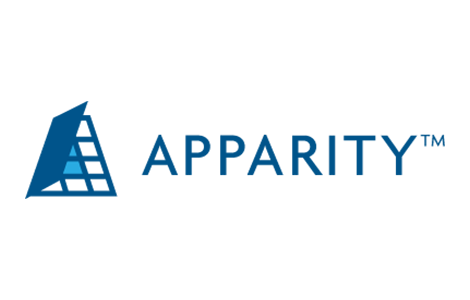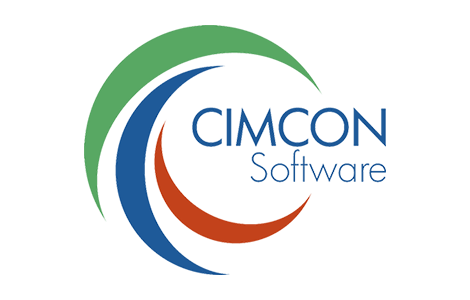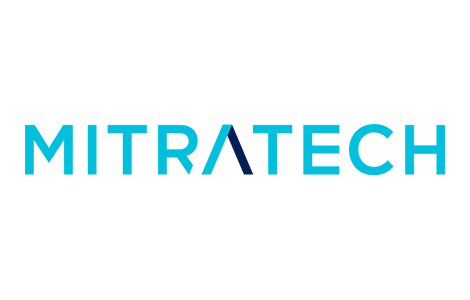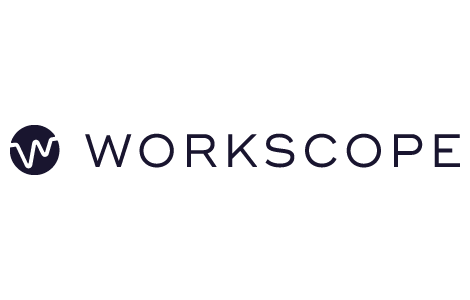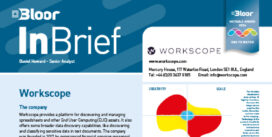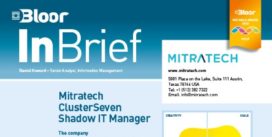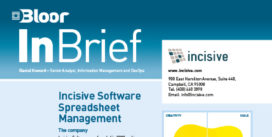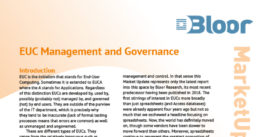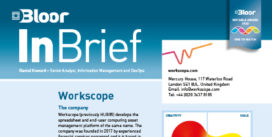Spreadsheet Governance
Last Updated:
Analyst Coverage: Daniel Howard and Philip Howard
Spreadsheet governance is a specialised aspect of governance in general – all the governance problems with spreadsheets could also occur with a badly managed database system, although most databases have sophisticated management features that make such mis-management less likely.
There are five major problems with spreadsheets. First, they are prone to error (for example, a column can easily contain extra, unprotected, blank cells, which don’t affect the results of calculations until someone adds a title or comment in one of these cells). Second, in organisations with no spreadsheet governance they tend to grow like Topsy, which means that they can take up an inordinate amount of disk space (one medium-sized bank audited its spreadsheets at over 100TB!) and are correspondingly expensive. Third, there is a lack of process control around the use of spreadsheets: it is often the case that spreadsheets are combined using cut and paste techniques, perhaps with other data as well, but without spreadsheet governance there is no way to capture these processes and make them into something repeatable. Fourth, spreadsheets are often linked to one another or to other data sources and it is easy for those links to break. Finally, there are potential compliance and regulatory issues around the use of spreadsheets (often associated with their poor security features such as weak encryption).
Spreadsheet governance aims to cure all of these issues.
Spreadsheet governance tools discover what spreadsheets exist and where they are, prioritise their management by discovering those spreadsheets that contain business critical information and/or are the most complex and therefore most prone to error, and provide for central control of those spreadsheets. This central control typically works by storing critical spreadsheets in a central repository from which they are served to users with relevant access controls and other security procedures. Version control is typically built-in. In addition, spreadsheet governance tools have the ability to detect errors in spreadsheets, broken links between spreadsheets and other spreadsheets or data sources, and discover deliberately fraudulent uses of spreadsheets.
Some spreadsheet governance products support the idea of over-the-shoulder monitoring of what you do with spreadsheets, as an alternative to control over what you do with them. This is important in some environments such as capital markets where quants (for example) do not want to be restricted by such controls.
Beyond that, some vendors offer process capture capability so that what were previously manual processes around the use of spreadsheets can be captured and automated.
Spreadsheet governance will be of interest to both compliance and security officers and this will especially be the case in industries, such as finance and insurance, where spreadsheets are heavily used. In addition, line-of-business managers, auditors and the CFO should be concerned about the accuracy of spreadsheets. In B2B environments where partners are providing regular information in the form of CSV files and .pdf documents as well as spreadsheets that need to be amalgamated on a regular basis the line of business manager should be interested in the process capture capabilities described. There are also spreadsheet goverance tools that specifically target collaboration as a feature and, again, line of business managers will be interested in these capabilities.
More generally, CIOs who want to take control of the organisations’ spreadsheet environment will care about this technology. Where business users are, in effect, building applications using spreadsheets (for example, for budgeting) then these should go through formal development and testing cycles as would be the case for other application development projects.
The ability to capture spreadsheet processes and automate them is a function that has only appeared within the last 18 months but interest in this area is definitely growing. On a more general note, the development of critical spreadsheets should be treated just like any other application development: with proper testing and so forth. Unfortunately, this falls outside the scope of spreadsheet governance and is up to corporate policies that are rarely recognised or implemented.
A trend that we expect to see emerge is for what we might call spreadsheet intelligence. While spreadsheets are themselves used for business intelligence purposes it would be useful to be able to query across spreadsheets, either across different versions of the same spreadsheet to determine trends or across different spreadsheets that have similar subject matter. Currently, you could do this by loading all the spreadsheet information into a data warehouse or by building yet more spreadsheets but both of these approaches are costly. We are aware that one spreadsheet governance vendor (Apparity) is planning to introduce this capability from within its governance solution and we expect this to catch on and become a trend.
To some extent, we might expect robust Financial Analytics tools to replace spreadsheets.
In 2011 Microsoft acquired Prodiance, a spreadsheet governance provider. Relevant features of Prodiance are incorporated into Excel 2013 and the accompanying version of SharePoint. Of course, this will not help with older versions of Excel but it is likely to have a dramatic impact on the established vendors within this market.
What Prodiance did not offer, and neither does Excel 2013, is the ability to capture processes and automate them. Neither does it offer spreadsheet intelligence.
We therefore expect that spreadsheet governance vendors will continue to thrive in companies that have not migrated to Excel 2013 but this will inevitably become a diminishing market. Thus we expect to see more focus from these vendors on features that Microsoft lacks, as described in the previous paragraph. We would like to see formal testing procedures for spreadsheet application development but we are not aware of any vendor moving in this direction as yet.


